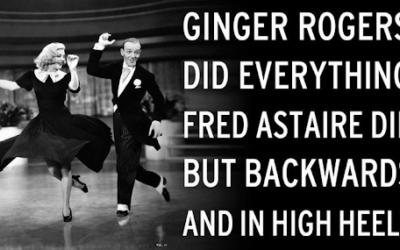Study: Women in the Labor Force – A Databook (Bureau of Labor Statistics, 2013)
Finding: Women’s participation in the workforce is vibrant, substantial and growing.
Note about The Woman Effect Research Index: This study was performed by researchers not affiliated with InPower Women. Our Research Index includes all relevant research to the subject of women, business and power. We do not influence how the research was conducted or reported by the researchers. In our abstracts, we focus on pulling out the most actionable advice for individual women. To suggest additional research we should index, or discuss our choice of abstract focus, please contact us
InPower Insight: When you hear that “women leave the workforce to have kids,” don’t believe it. 65% of mothers with children under 18 work (2% higher than the number of working men).
Summary:
The U.S. Department of Labor’s Bureau of Labor Statistics accumulated statistics on working women in a 108 page report. Below are a few highlights, but the first few pages of the report are worth scanning to get an updated picture of women in the workforce.
-
Women’s labor force participation rate peaked at 60.0 percent in 1999, following several decades in which women increasingly entered the labor market. In 2011, 58.1 percent of women were in the labor force, down 0.5 percentage point from 2010. (See tables 1 and 2.)
-
The labor force participation rate of mothers with children under 18 years of age was 70.9 percent in March 2011, down slightly from 2010 In 2011, women accounted for 51 percent of all persons employed in management, professional, and related occupations, somewhat more than their share of total employment (47 percent). The share of women in specific occupations within this large category varied.
-
Women who worked full time in wage and salary jobs had median usual weekly earnings of $684 in 2011. This represented 82 percent of men’s median weekly earnings ($832).
-
In 2011, 27 percent of employed women usually worked part time—that is, fewer than 35 hours per week. In comparison, 11 percent of employed men usually worked
part time. (See table 20.)
-
Among married-couple families, 54 percent had earnings from both the wife and the husband in 2010, compared with 44 percent in 1967.
-
In 2010, working wives contributed 38 percent of their families’ incomes, up about 11 percentage points from 1970, when wives’ earnings accounted for 27 percent of their families’ total income.
-
In 2011, approximately 2.4 million women who were paid at an hourly rate had earnings at or below the prevailing federal minimum wage.
-
Among 2011 high school graduates, young women were more likely than young men to be enrolled in college in October 2011 (72 percent, compared with 65 percent,respectively). (See table 30.)
- In 2011, there were 11.3 million veterans of the U.S.Armed Forces in the labor force. Ten percent of these veterans were women. Among female veterans in the labor force, a little more than half (56 percent) served in the Gulf War-era I and II service periods (August 1990 to present).
-
Of the 14.7 million women with disabilities in 2011, 2.6 million, or 17.4 percent, were in the labor force.
Career Coaching Tip: It used to be that being a “working woman” was like being a minority, or someone who did something unusual. No more. You stand with the great percentage of women in the U.S. workforce, which is a lot! You’re not a “working woman,” you’re a woman who works. Make this part of your identity, but not all of it.
Guide to Women in Leadership
Organizations with women in their executive suites regularly out-perform others. Yet rising female executives (and their mentors) are frustrated at how hard it is to break through the glass ceiling. In this extensive guide, Executive Coach Dana Theus shares her tried and true strategies to help women excel into higher levels of leadership and achieve their executive potential.






